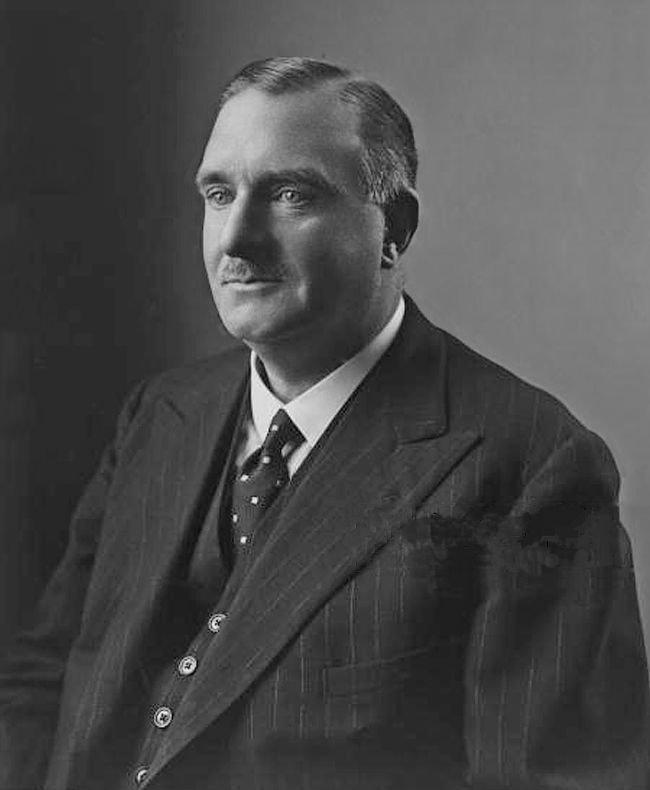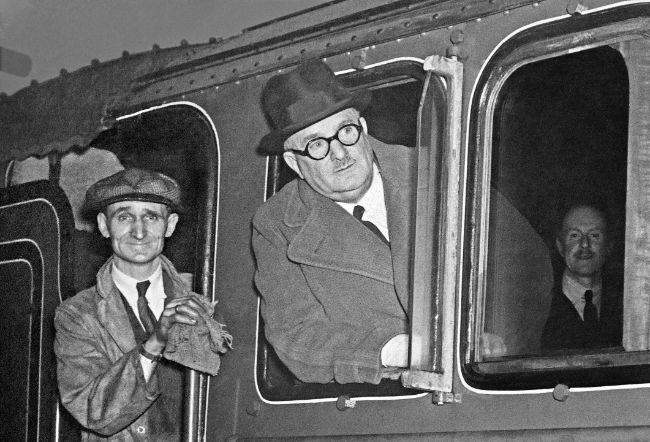Arthur Peppercorn (29th January 1889 – 3rd March 1951) succeeded Edward Thompson and became the final Chief Mechanical Engineer of the LNER quite late in his career, so he was to be at the pinnacle of Doncaster engineering only from 1946 to the end of 1949. In this short time he left his mark in a very positive way.
‘Pepp’ as he was known came to Doncaster as a Premium Apprentice under H.A.Ivatt of in 1905, the same year as Herbert Nigel Gresley came to the Great Northern Railway from the Lancashire and Yorkshire Railway, as Carriage and Wagon Superintendent.
Arthur Peppercorn was born on 29th January 1889 in Stoke Prior near Leominster Herefordshire. Like Gresley, he was the son of a clergyman who hoped his son would follow him into the church. To fathers annoyance his son said he wanted to be an engine driver. Father, Alfred T., had previously been Curate of East Woodhay in Hampshire. His wife Agnes Ann was born in Queensland. They brought with them to Stoke Prior, a daughter Jane Dignes Peppercorn. Alfred T originated from St. Neots. Possibly the boy Arthur had returned from a visit to family there having seen Patrick Stirling’s magnificent singles at the head of the GNR expresses. Had this stirred his desire to go to Doncaster?

‘Pepp’ went to Hereford Cathedral School in 1901 and left there to take up his apprenticeship on 19th September 1905. In those days the railway workshops were an acknowledged training ground for much of British industry. One of Arthur’s contemporaries at Doncaster and a great friend was W.O. Bentley who went on to establish Bentley Cars. Arthur came to the notice of Gresley who took a liking to him and introduced him to his family. Clearly this was more than a matter of friendship, Gresley had noticed that Peppercorn had outstanding ability.
Pepp’s first appointment after training was as District Locomotive Inspector at Ardsley, between Wakefield and Leeds. He was to stay there until WW1 when he moved to a position of Assistant to the District Locomotive Superintendent at Peterborough. Both of these were important centres on the GNR. Ardsley was largely a goods and mineral working depot and Peterborough had a good mix of types of service, on and off the main line. During the war Peppercorn was commissioned in the Royal Engineers, served in France and became technical assistant to the Chief Mechanical Engineer of the Directorate of Transportation. On his return to the GNR he was promoted to District Locomotive Superintendent at Retford, his first job as the senior person in a District albeit a fairly small one. In 1921, a year after Thompson had gone from Doncaster to York, Pepp became assistant to the newly appointed Carriage & Wagon Superintendent at Doncaster. This was an important move for him, widening his knowledge and experience and fitting the young man for important and senior appointments. In 1923 he took the senior Carriage & Wagon position on the newly formed LNER. Four years later he became Carriage & Wagon Superintendent at York when Edward Thompson moved from there to Stratford. Before Thompson went to Darlington from Stratford, Pepp joined him as his assistant. This made then, three positions where he followed ‘ET’. This must have been quite a culture shock for the staff, the gentle and kindly Peppercorn being very different from the autocratic and difficult Thompson.
In 1937 Arthur Peppercorn was appointed Locomotive Running Superintendent of the Southern Area of the LNER. He followed Thompson once more in 1938 to Mechanical Engineer Darlington. After Sir Nigel Gresley’s sad early death before his 65th birthday in 1941, Thompson at 60 was appointed in his stead. Pepp moved to Doncaster to a new post as Assistant Mechanical Engineer, a job which also embraced Mechanical Engineer Doncaster. It is said that Thompson, who had lost his wife and may have been lonely, took to ringing Pepp in the late evening when Pepp, after dinner liked to have a relaxed evening. He would ask him to come round and discuss some matter. It added to the difficulty as the two lived quite close to one another, the Peppercorns at 80 Cantley Lane.
Thompson’s reign came to an end at his 65th birthday and Arthur Henry Peppercorn was appointed Chief Mechanical Engineer on 1st July 1946. He was said to be ’great fun with a dry sense of humour’. He was awarded the OBE in the 1945 Birthday Honours list having refused it twice previously.
When Pepp took command he brought J.F.Harrison from Mechanical Engineer Scotland into the post of Assistant CME. He also brought the very able Bert Spencer, formerly Gresley’s Technical Assistant, back into the fold and together with Teddy Windle as Chief Draughtsman; he had now a strong design team to work with him. Prior to Thompson’s retirement, changes were being made to design on the Pacifics built during his reign. This work was at an advanced stage. The drawing board upon which the work was being done had always the overnight cover obscuring the front of the design and was covered with other drawings when Thompson came into the drawing office. On ET’s retirement, the cover came off revealing a locomotive as Peppercorn and his team would have it. This became the Peppercorn class A2 pacific, a locomotive much more in the Doncaster tradition and without the unsatisfactory features that marred Thompson’s engines. The first of these to be built was named A.H. Peppercorn after its designer.

LNER CME, A H Peppercorn (front row: 4th from right) and Staff in front of Class A2 Pacific locomotive No. 525 A. H. Peppercorn at Doncaster on 31st December 1947 (Photograph courtesy of the National Railway Museum, York)
The final Peppercorn design became the A1 class pacifics. These renowned locomotives have been called the finest express passenger locomotives to run in this country. The final batch included five fitted with roller bearing axleboxes. After 12 years in service these five had run 4.8 million miles, a remarkable performance. Sadly all were scrapped after a short life with the introduction of diesels and none survived into preservation though one of the A2s does, No. 60532 Blue Peter. The new Peppercorn class A1 No. 60163 Tornado was constructed in a building over which Pepp had control in one of his early appointments. His widow, now Dorothy Mather, is Honorary President of the Trust.
Pepp retired at the end of 1949 after a short but successful reign. Wanting a quiet farewell party, his principal assistants had another idea. A dinner party was arranged for their much loved Chief. After the dinner and toasts, a presentation was made, a splendid model of No. 525 A.H. Peppercorn. Sadly Pepp never had much time to enjoy his retirement, dying on 3rd March 1951.

To round off the story, Pepp’s widow, Dorothy Mather, was President of the Trust from the early ’90s until her death on 10th November 2015 at the age of 99. She provided enormous encouragement and support to Trust members, particularly Council members, and attended very many of the Trust’s events from the cutting of the steel plates for Tornado’s frames in 1994 through to the unveiling of Tornado in green livery at the NRM on 13th December 2008. At the latter event, the Trust presented to Dorothy with a commemorative album of photographs recording the history of the Tornado project, and particularly her involvement in it. The photograph shows the moment between this presentation and the unveiling of the ‘green’ Tornado, still draped behind her.
